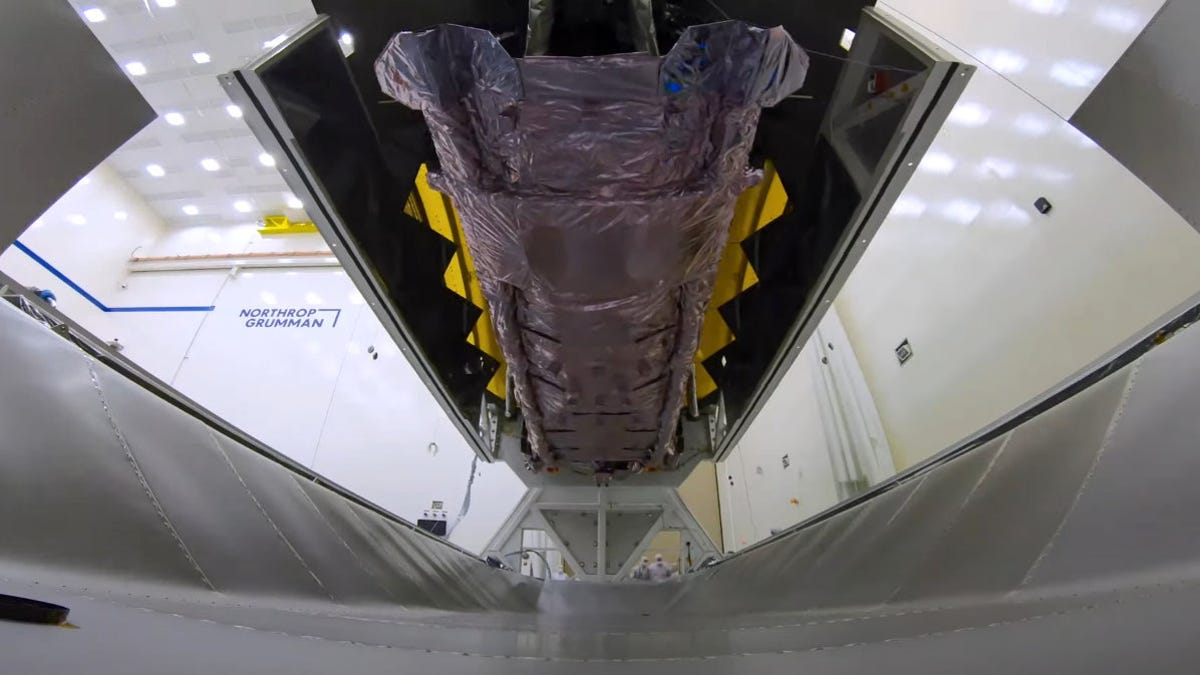See how NASA ships the massive James Webb telescope in a 'suitcase'
It's not easy getting the world's largest space telescope from California through the Panama Canal and all the way to French Guiana for launch.
The James Webb Space Telescope arrived in French Guiana on Tuesday after a 16-day journey that involved a big truck, a barge, a ship and a trip through the Panama Canal. It'll launch into space from this South America destination. NASA has now given us a behind-the-scenes look at the epic shipping process.
JWST made the trip after being packed into what NASA called a "suitcase," a massive special container more formally known as the Space Telescope Transporter for Air, Road and Sea. "This custom container was outfitted for any extreme or unexpected conditions Webb could have encountered during travel," NASA said in a statement Tuesday.
The suitcase would never be OK'd as a carry-on. Sttars clocks in at 168,000 pounds (76,000 kilograms) and stretches 110 feet (33.5 meters) long. JWST is folded up like origami to fit inside, and to prepare it for its eventual launch.
A NASA video shows the efforts it took to encase the observatory in its suitcase at Northrop Grumman's facilities in California and then drive it to the docks on Sept. 24. The transportation team even checked for potholes along the way to make sure the sensitive telescope wouldn't get jarred.
A second video shows the complicated process of moving the telescope to the cargo ship that would take it through the Panama Canal. The shipping route was planned out to avoid rough waters.
JWST, a joint project of NASA, the European Space Agency and the Canadian Space Agency, is scheduled to launch on an Ariane 5 rocket from Europe's Spaceport on Dec. 18 after years of delays. Though it's close to its final Earth destination now, it still needs to go through a couple of months of preparations prior to launch.
JWST is packed with next-generation technology that'll help it gaze into the past and investigate the origins of our universe. If all goes well, it'll be in operation at the same time as the aging Hubble Space Telescope, which is still hanging on despite a series of technical issues. JWST may be running late, but at last the launch is in sight.


